Grant Nations
Empirical Study of Ceiling Proximity Effects and Electrostatic Adhesion for Small-scale Electroaerodynamic Thrusters
Oct 25, 2024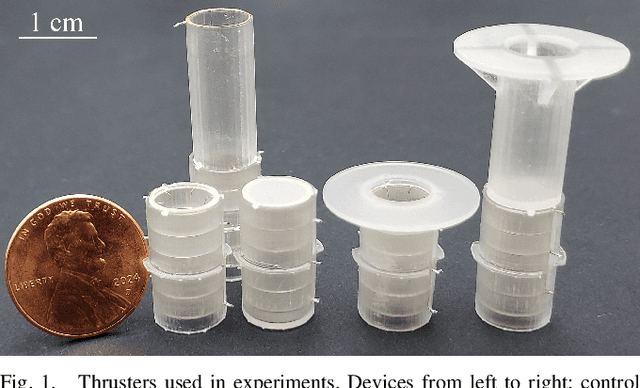
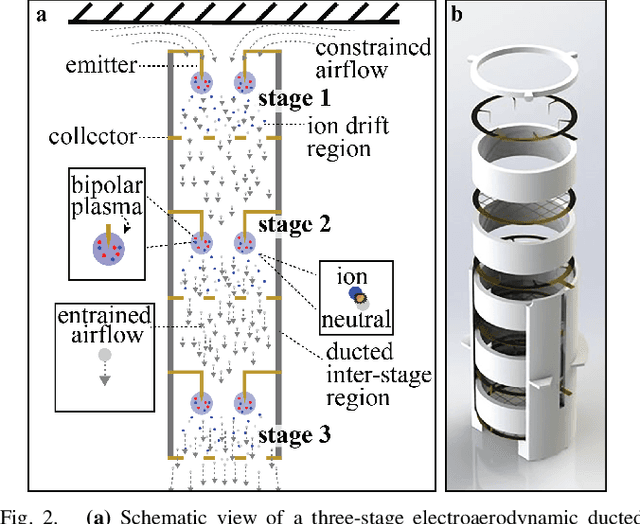
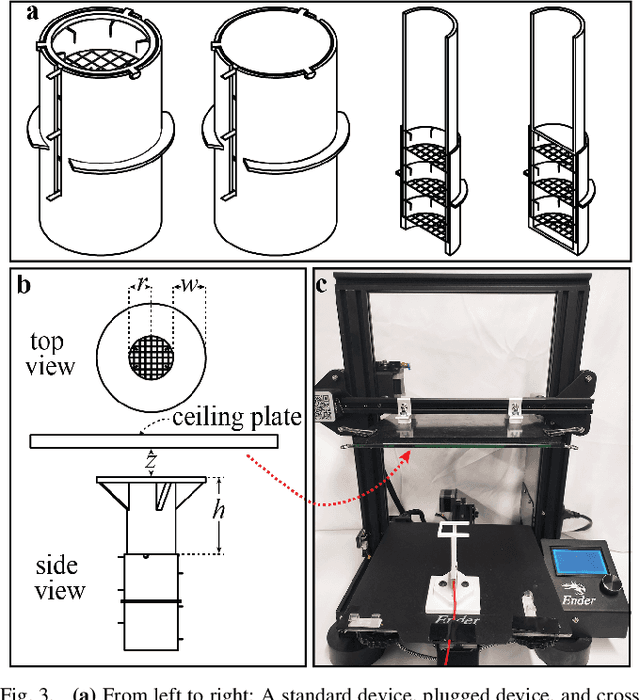
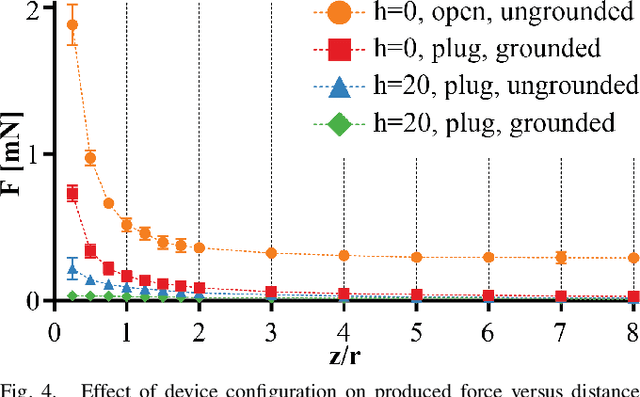
Abstract:Electroaerodynamic propulsion, where force is produced via the momentum-transferring collisions between accelerated ions and neutral air molecules, is a promising alternative mechanism for flight at the micro air vehicle scale due to its silent and solid-state nature. Its relatively low efficiency, however, has thus far precluded its use in a power-autonomous vehicle; leveraging the efficiency benefits of operation close to a fixed surface is a potential solution. While proximity effects like the ground and ceiling effects have been well-investigated for rotorcraft and flapping wing micro air vehicles, they have not been for electroaerodynamically-propelled fliers. In this work, we investigate the change in performance when centimeter-scale thrusters are operated close to a "ceiling" plane about the inlet. We show a surprising and, until now, unreported effect; a major electrostatic attractive component, analogous to electroadhesive pressure but instead mediated by a stable atmospheric plasma. The isolated electrostatic and fluid dynamic components of the ceiling effect are shown for different distances from the plane and for different materials. We further show that a flange attached to the inlet can vastly increase both components of force. A peak efficiency improvement of 600% is shown close to the ceiling. This work points the way towards effective use of the ceiling effect for power autonomous vehicles, extending flight duration, or as a perching mechanism.
Empirical Study of Ground Proximity Effects for Small-scale Electroaerodynamic Thrusters
Sep 19, 2023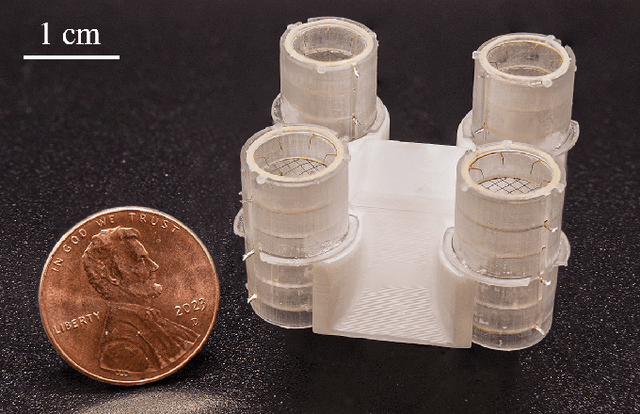



Abstract:Electroaerodynamic (EAD) propulsion, where thrust is produced by collisions between electrostatically-accelerated ions and neutral air, is a potentially transformative method for indoor flight owing to its silent and solid-state nature. Like rotors, EAD thrusters exhibit changes in performance based on proximity to surfaces. Unlike rotors, they have no fragile and quickly spinning parts that have to avoid those surfaces; taking advantage of the efficiency benefits from proximity effects may be a route towards longer-duration indoor operation of ion-propelled fliers. This work presents the first empirical study of ground proximity effects for EAD propulsors, both individually and as quad-thruster arrays. It focuses on multi-stage ducted centimeter-scale actuators suitable for use on small robots envisioned for deployment in human-proximal and indoor environments. Three specific effects (ground, suckdown, and fountain lift), each occurring with a different magnitude at a different spacing from the ground plane, are investigated and shown to have strong dependencies on geometric parameters including thruster-to-thruster spacing, thruster protrusion from the fuselage, and inclusion of flanges or strakes. Peak thrust enhancement ranging from 300 to 600% is found for certain configurations operated in close proximity (0.2 mm) to the ground plane and as much as a 20% increase is measured even when operated centimeters away.
 Add to Chrome
Add to Chrome Add to Firefox
Add to Firefox Add to Edge
Add to Edge